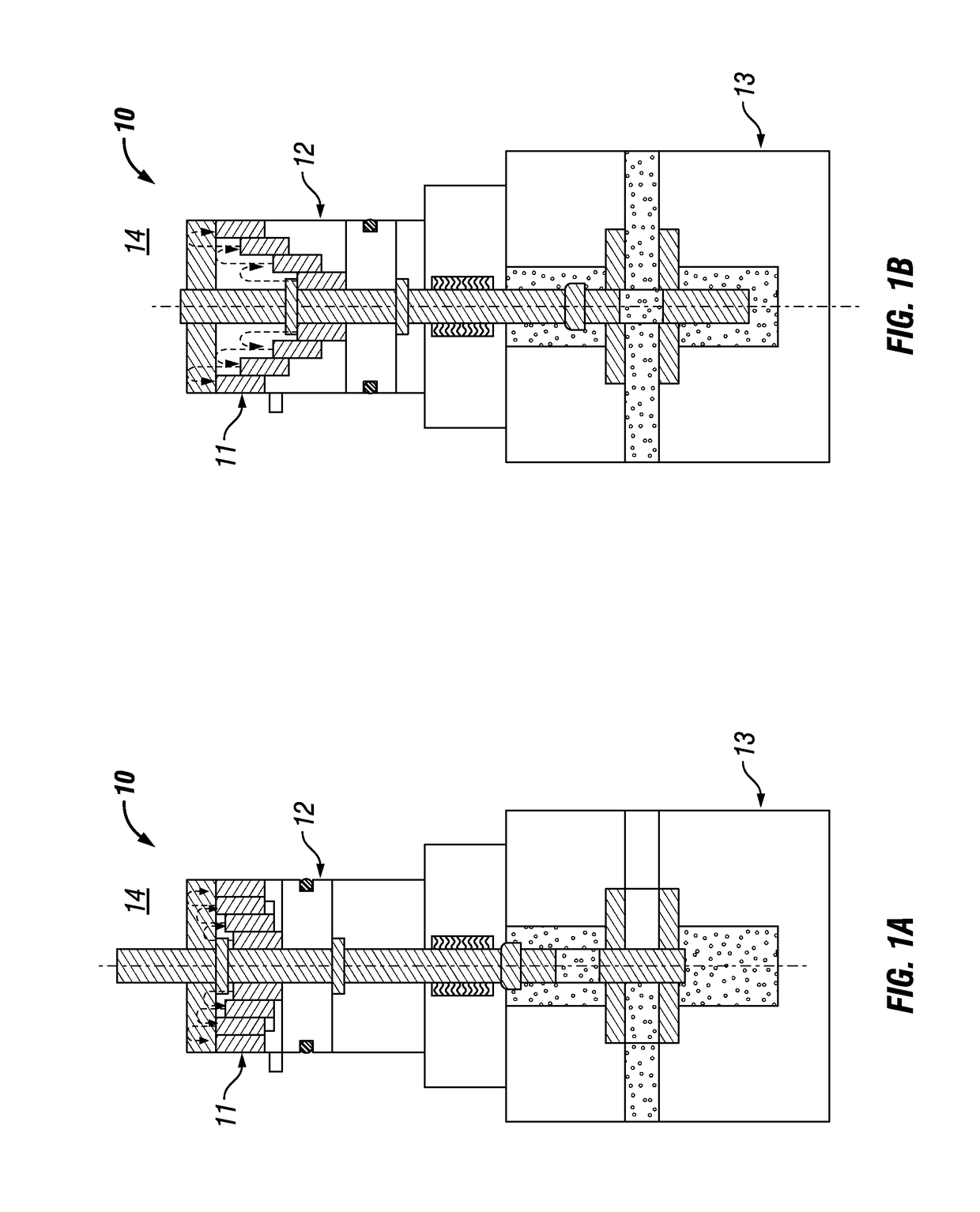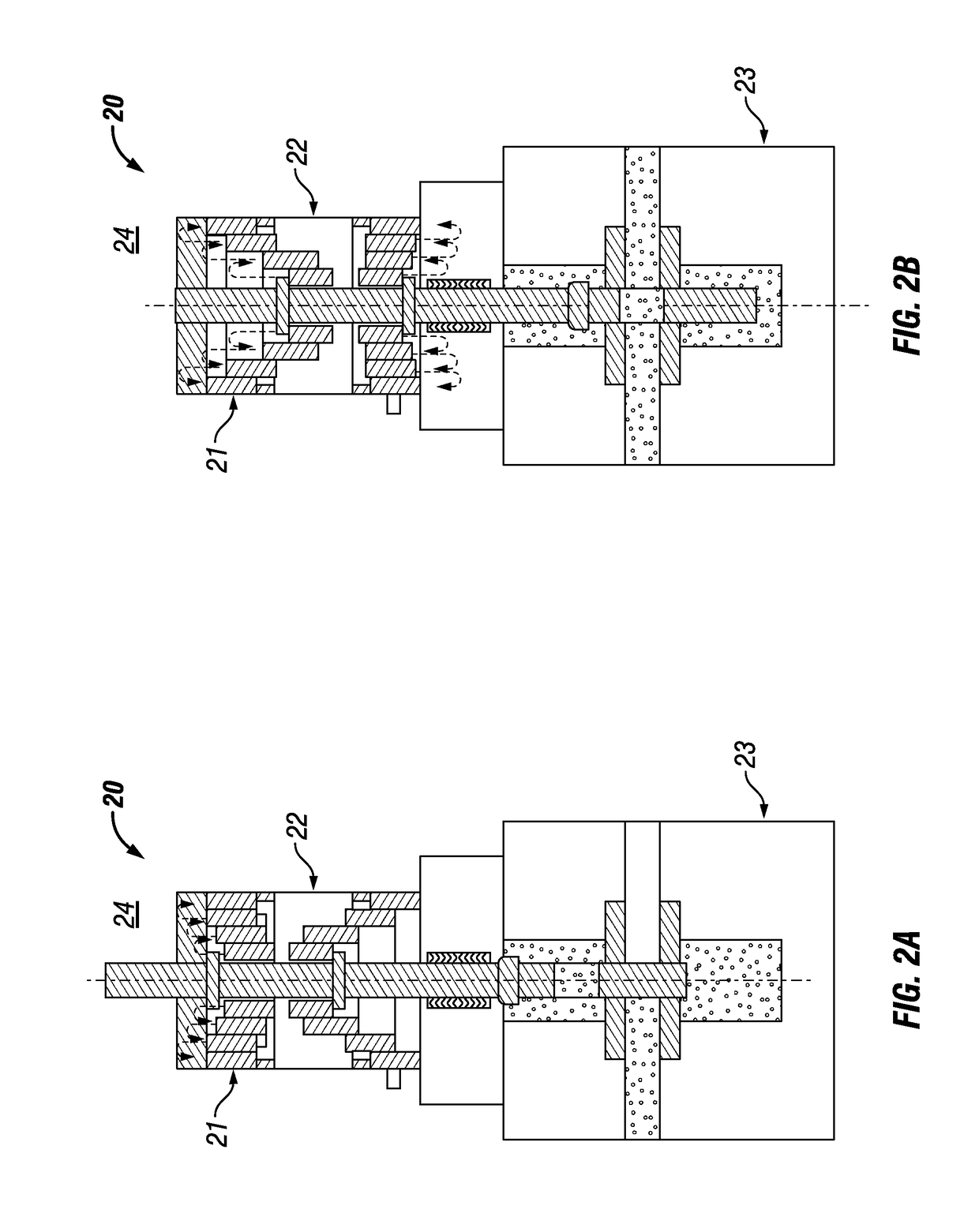Subsea actuator with magnetic return
a technology of subsea actuators and magnetic springs, which is applied in the direction of valve operating means/release devices, well accessories, and wellbore/well accessories, etc., can solve the problems of inability to produce high pressure large bore valves, excessively large springs, and long wired springs, etc., to achieve less spring force, no magnetic spring resistance, and small subsea actuator size
- Summary
- Abstract
- Description
- Claims
- Application Information
AI Technical Summary
Benefits of technology
Problems solved by technology
Method used
Image
Examples
Embodiment Construction
[0024]FIG. 1A illustrates an embodiment of a subsea actuator with magnetic return 10 comprising a hydraulic actuator piston 12 and a magnetic spring 11. In FIG. 1A, the subsea actuator with magnetic return 10 is in the initial position (valve closed). FIG. 1B illustrates an embodiment of a subsea actuator with magnetic return 10 comprising a hydraulic actuator piston 12 and a magnetic spring 11. In FIG. 1B, the subsea actuator with magnetic return is in the stroked position (valve open). The subsea actuator with magnetic return 10 can be assembled to a subsea valve 13. The subsea actuator with magnetic return 10 is powered by hydraulic force to move the valve stem 14 in one direction, e.g., to open the subsea valve as shown in FIG. 1B. The subsea actuator with magnetic return 10 is moved in the opposite direction via a magnetic spring 11 as shown in FIG. 1A. The magnetic spring 11 contains an array of magnets configured to create the required magnetic density and force to move the v...
PUM
 Login to View More
Login to View More Abstract
Description
Claims
Application Information
 Login to View More
Login to View More - R&D
- Intellectual Property
- Life Sciences
- Materials
- Tech Scout
- Unparalleled Data Quality
- Higher Quality Content
- 60% Fewer Hallucinations
Browse by: Latest US Patents, China's latest patents, Technical Efficacy Thesaurus, Application Domain, Technology Topic, Popular Technical Reports.
© 2025 PatSnap. All rights reserved.Legal|Privacy policy|Modern Slavery Act Transparency Statement|Sitemap|About US| Contact US: help@patsnap.com



